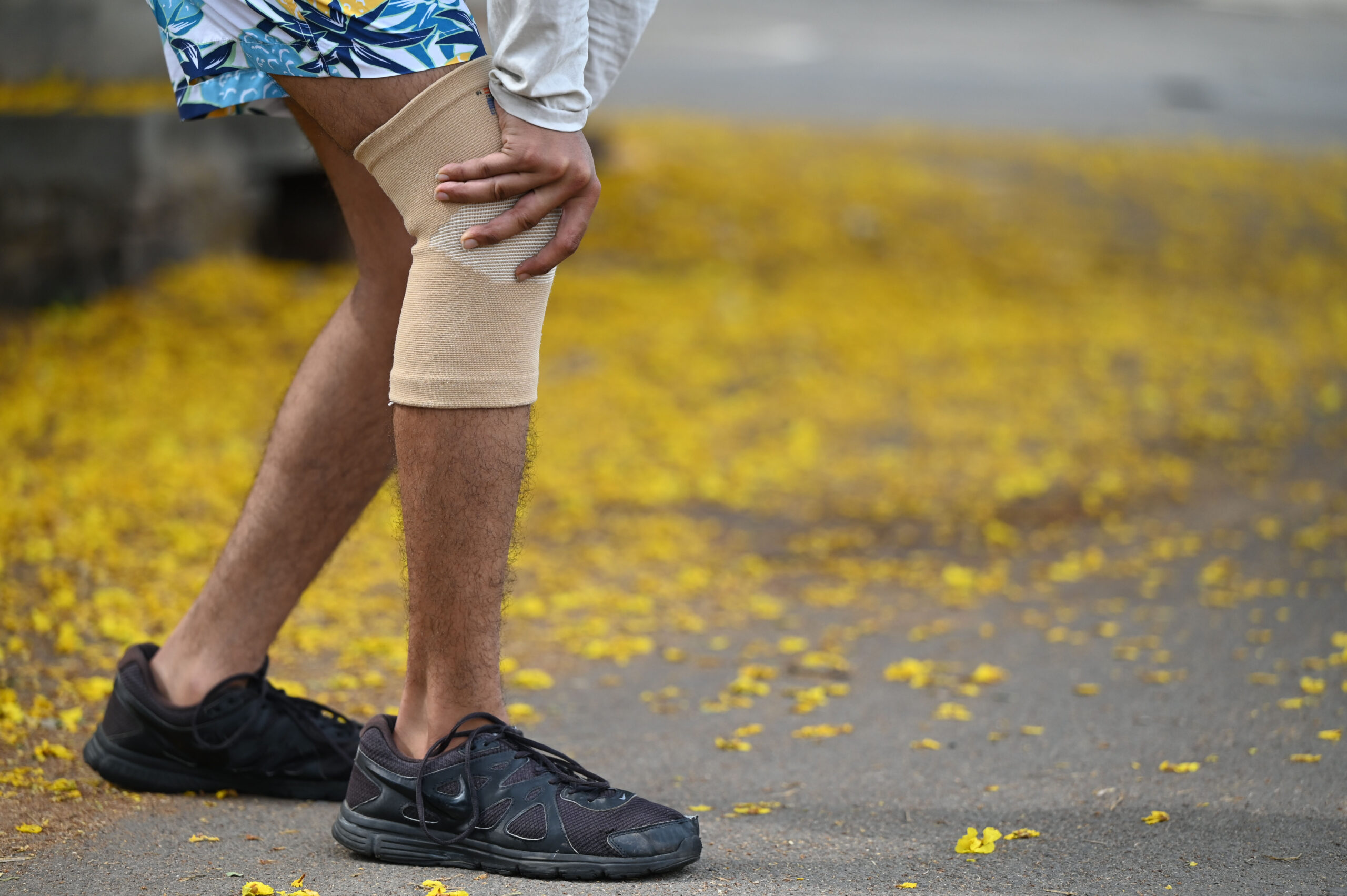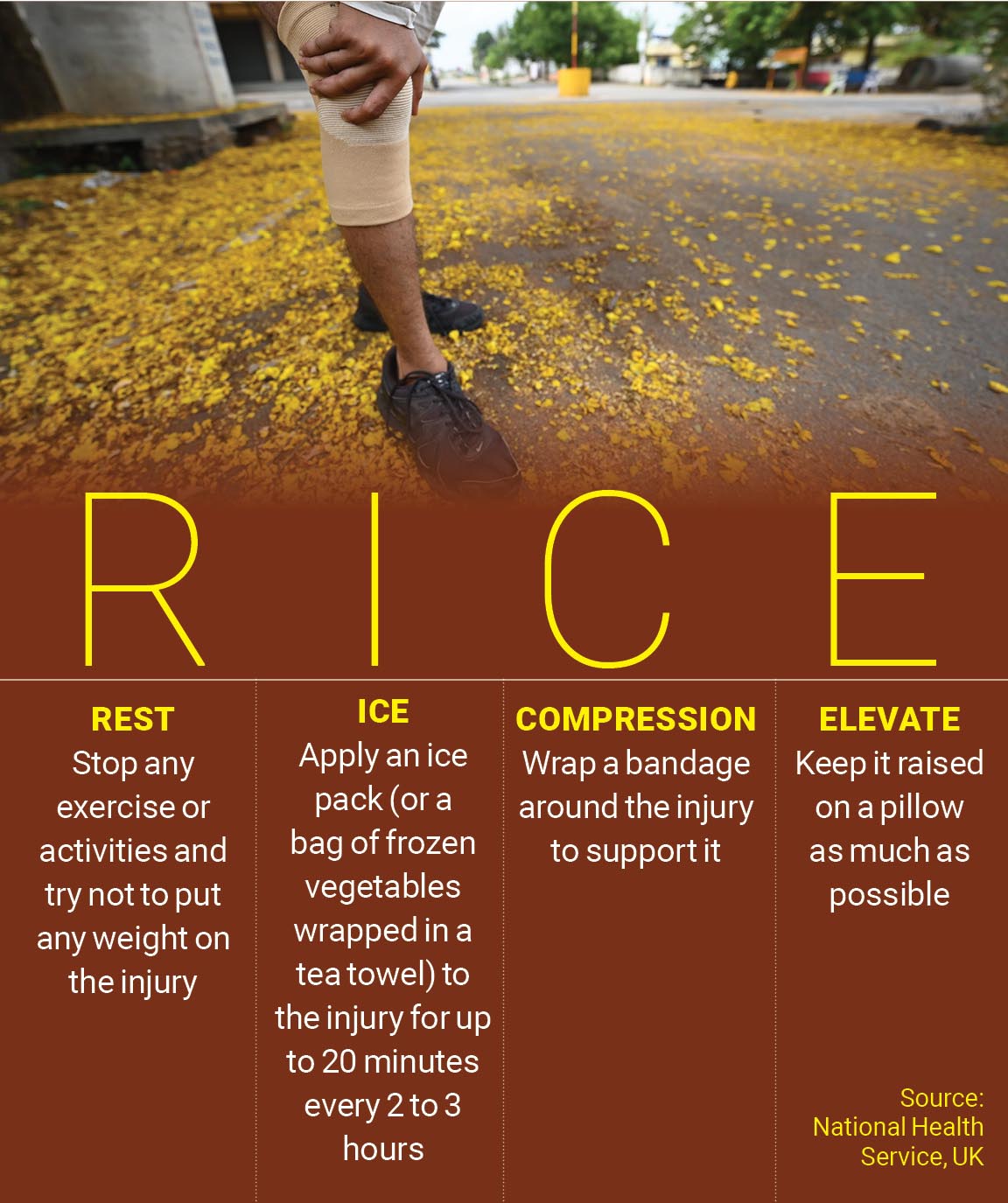
It was six years ago when Meena B, a homemaker from Bengaluru, started developing knee pain. The pain affected the life of the 64-year-old considerably. She started facing hurdles while doing her daily chores. Doctors told Meena that she had developed knee pain due to her age, prolonged periods of standing while working and the wear and tear of her knee joint.
“Due to knee pain, my work pace reduced. I couldn’t stand for more than 30 minutes at one stretch. I needed to rest or sit for at least ten minutes before restarting the work I had left midway,” Meena tells Happiest Health.
Explaining the reasons behind how to reduce knee pain, Dr Naresh Shetty, a Bengaluru-based orthopaedic, president of Quess Health Care in Bengaluru, says, “Knee joint is made of bone, cartilage, ligaments, muscles and tendons and together they help in its movement. When any of these structures are damaged, people get knee pain. The common causes are degenerative arthritis (age-related), rheumatoid arthritis (inflammatory), ligament injury and fracture.”
Knee pain symptoms
Pain, stiffness, swelling and immobility are the common symptoms of knee pain, informs Dr Shetty. He says that climbing, squatting or bending the knee could worsen the symptoms.
“Redness, warmness, weakness, instability, popping and cracking noises and the inability to fully straighten the knee are the other symptoms of knee pain,” says Dr Girish A, senior resident, department of orthopaedics, Subbaiah Medical College and Hospital in Shivamogga, Karnataka.
Risk factors
Both Dr Girish and Dr Shetty say that obesity, lack of muscle strength, previous injuries, deformed knees and inflammatory or infected knees could increase the chances of a person getting knee pain.
How to get rid of knee pain
Diagnosis of knee pain is made based on patient history, physical examination and investigation. “A few conditions are more likely to occur in individuals with certain characteristics. For example, primary osteoarthritis is more frequent in older adults (degeneration of articular cartilage). However, injuries, infection or inflammation cause secondary osteoarthritis,” says Dr Shetty.
“Physical examination helps in looking out for any swelling, fluid collection or instability of the joint. Blood investigations and imaging help in confirming the clinical diagnosis. X-rays, CT scans or MRIs are needed for identifying any damage or abnormalities.”

Relieving knee pain
Dr Girish says the ways to reduce knee pain can be treated through physiotherapy like moist heat, isometric quadriceps exercise and hamstring strengthening exercises.
“The isometric quadriceps and hamstring strengthening exercises include tightening of thigh muscles with a rolled towel under the knee and straight leg raising,” says Dr J V Srinivas, lead consultant, orthopaedics and joint surgery, Aster RV hospital, Bengaluru.
To fix the structural damage, surgery is also a solution. “Meanwhile, surgery should not be the first choice. Knee pain can be also treated through complementary therapies as some people find relief using massage, biofeedback (a method that provides feedback regarding the electrical activity of the muscle which helps in assisting the individual to increase and decrease the tension developed in the muscle), relaxation, meditation, acupuncture and yoga,” says Dr Shetty.
“Knee problems are very common. Knee is essentially a weight-bearing joint and it goes through wear and tear and this causes pain,” says Dr Shetty. “Knee pain is more prevalent among obese persons and people with a history of injuries. Women seem to suffer more than men because of excessive activity in the knee joint area as they attend to their household chores while standing,” he adds.
Dr Shetty says that knee pain can be delayed by making lifestyle changes like including regular exercise and reducing weight.
Doctors’ recommendations to alleviate knee pain
- Weight loss: The knee is a weight-bearing joint and thus losing weight becomes important to reduce its burden. Body Mass Index (BMI) should be maintained between the range of 18.5-25 kg/m2.
- Being smart about exercises and playing sport: Isometric quadriceps exercise (knee strengthening exercise) and playing any kind of sport is helpful.
Low impact workouts like swimming and walking and light strength training workouts are also recommended. - Avoid squatting and sitting cross-legged: These activities aggravate knee pain and can lead to arthritic changes (inflammation and breakdown of joints).
- Using RICE (Rest, Ice, Compression and Elevation) therapy helps in reducing swelling and pain. It is useful for all acute injuries like sprains and bruises.
- Walking aids: Walking aids assist in walking and improving mobility. It helps reduce knee pain, decrease the risk of falling and increase confidence while walking. Examples of walking aids are crutches, cane, walkers etc.
- Corrective footwear: These are designed to address the trouble areas of the foot. It can help reduce pressure in diabetic feet and correct the arches in flat feet. It can also be used for club foot and uneven limbs.
- Food supplements: Food supplements like Omega 3 fatty acids like fish oil, turmeric and Vitamin D help reduce knee pain.
- Local application of medicines can also reduce pain and inflammation. It could be in the form of gel, cream, ointment or spray.
- Using mild pain killers (only if advised by doctors) and avoiding strenuous activities.
After her knee pain became unbearable, Meena decided to see a doctor. “I did not go to a doctor during the initial days of knee pain. I was taking pain killers, wearing knee socks and massaging my knees with coconut oil, castor oil and mustard oil.” Later, she went to an orthopaedic who suggested surgery. However, Meena’s life did not stop, thanks to RICE therapy.


















2 Responses
Excellent information
Thank you so much